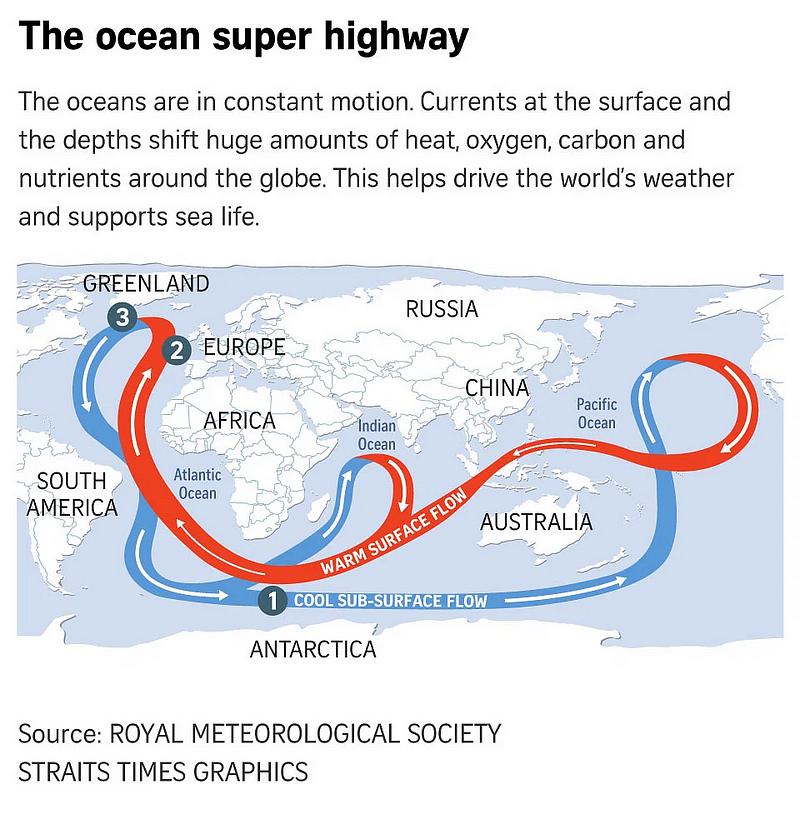Global Warming: The Urgency of Now and Its Impacts on Our Planet
Written on
Chapter 1: The Immediate Threat of Climate Change
Climate change has transitioned from a distant concern to a current crisis, with its repercussions becoming increasingly severe and frequent. The rise in global temperatures, extreme weather phenomena, and natural disasters are now everyday occurrences. Recent global reports illustrate the turmoil that climate change is inflicting on weather systems, leading to a dismal outlook for the future.
For instance, California has endured relentless extreme weather patterns over the past few months. Following a period of drought, the state has faced torrential rains, fierce winds, and heavy snowfall, resulting in catastrophic floods and blizzards. Tragically, these events have caused multiple fatalities and significant disruptions.
The latest data reveals that California has recorded its highest snowpack on record, prompting discussions among climate scientists about the factors contributing to this surge in precipitation and the potential implications of a warmer climate.
Moreover, warnings have emerged regarding destructive tornadoes that have devastated regions of the eastern and southern United States. In just two weeks, over 50 lives were lost due to tornadoes and severe thunderstorms, with states like Alabama, Illinois, Mississippi, Tennessee, and Arkansas suffering substantial damage.
Yet, these weather-related disasters are not confined to the U.S. Other nations are grappling with similar crises, such as the unusually dry winter in Europe that has left Venice’s canals parched, and the African coast, which is currently experiencing its longest-lasting tropical cyclone. Recent government data indicates that ocean surface temperatures have reached unprecedented levels since satellite monitoring began, leading to widespread marine heatwaves globally.

Chapter 2: Ocean Temperatures and Their Consequences
According to preliminary figures from the National Oceanic and Atmospheric Administration (NOAA), the average ocean surface temperature has surged to 21.1°C since early April, breaking the previous record of 21.0°C set in 2016. This alarming trend poses significant threats to marine ecosystems and the planet as a whole.
The oceans play a critical role in absorbing heat trapped by greenhouse gases, yet rising temperatures jeopardize marine life and pose serious risks to human health and food security. The interconnectedness of these events is particularly concerning. Warmer oceans not only diminish their ability to absorb heat but also fuel more intense storms, threaten ice sheets, and contribute to rising sea levels due to the expansion of saltwater as it warms.
The first video titled "How Changing Ocean Temperatures Could Upend Life on Earth" delves into the ramifications of rising ocean temperatures on marine ecosystems and global weather patterns.
Further complicating matters, scientists warn that global warming is accelerating the melting of Antarctic ice, which is introducing substantial amounts of freshwater into the ocean. This influx disrupts the Antarctic overturning circulation—a crucial ocean current system that regulates global climate patterns.
Understanding the importance of this circulation is vital. It involves cold, salty water from Antarctica sinking to depths of over 4,000 meters, stimulating the global movement of water that distributes oxygen and nutrients across oceans. However, the increase in meltwater is diluting these waters, decreasing their salinity and density, which impedes their ability to sink effectively. This process is exacerbated by rising greenhouse gas emissions from fossil fuel combustion.

Chapter 3: The Impending El Niño Phenomenon
Climate scientists are also noting an increased probability of an El Niño event emerging later this year. This phenomenon, characterized by warming in the Pacific Ocean, can lead to severe weather worldwide. Current models predict the potential for a “super El Niño,” marked by unusually high temperatures in the central Pacific.
The last super El Niño in 2016 significantly contributed to record global temperatures and triggered a cascade of extreme weather events, including floods and droughts. A recent report from Australia’s Bureau of Meteorology indicates that all evaluated models predict ocean surface temperatures will exceed the El Niño threshold by August.
The latest updates underscore the urgent need for collective action to address climate change and foster a sustainable future. Governments, businesses, and individuals must all contribute to reducing greenhouse gas emissions, adopting eco-friendly practices, and minimizing our environmental impact. It is imperative that we act now to safeguard our planet for future generations.
The second video titled "Climate Change disrupts ocean circulation, breakdown could disrupt global ecosystem" explores the potential consequences of oceanic changes on global ecosystems and weather patterns.
Stay informed about these pressing issues and more by following updates from credible sources and engaging in discussions about climate action.